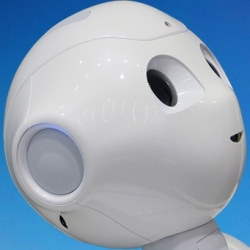
Digital banking brought a transformational wave to the banking system. As traditional banking practices slowly adjusted to the wave, AI quickly caught up and made the bot market hotter than ever before. The banking world is launching smarter bots and chatty virtual assistants, and the competition is only getting started.
American chatbot powers Singaporean banking: Kai, a creation of Kasai, is an AI-driven conversational bot that carries an in-depth knowledge of finance and uses impeccable banking terminology. Operating via Facebook Messenger, Slack, or SMS, Kai is said to handle tasks ranging in difficulty from mundane to complicated. It’s also touted as a tool that makes banking as easy and natural as sending a text message.
And it’s in use in the real world: Singapore’s DBS Bank recently launched a Kai-powered assistant for its customers in Indonesia.
Swedish bots mold to consumer preferences
Many Swedish companies have rolled out advanced versions of banking bots designed to sound like women. This design element is supported by research that suggests customers feel more comfortable with female voices.
This year, Aida was rolled out by SEB AB, one of Sweden’s biggest banks. The bot acts as a customer representative that is “always at work, 24/7, 365 days a year,” as the bot itself says. Aida follows in the footsteps of her predecessor, Amelia, which was previously introduced by SEB. Unlike Aida, Amelia was meant for internal IT support and worked with employees.
Another female-voiced assistant, Nina, launched by Swedbank AB, allows customers to simply message her with their questions. Nina provides the financial services best suited to those customers’ needs, saving human agents time they can now put toward more complex tasks.
Sweden’s Nordea Bank has also recently employed a virtual assistant named Nova for its life and pensions unit. Nova was designed on with a female voice as well. So far, Nova is programmed to answer inquiries in Norwegian and is not allowed to store any sensitive information.
These innovations are interesting in that they are customized to consumer preferences, but competition in the real world of banking technology is all about staying ahead of the curve. For this reason, many banks are going beyond conversational bots.
Japanese robots add emotional intelligence
Banks are adding bots with emotional intelligence to gain momentum and cut time and costs. A single banking bot can now offer the same integrated services a bank teller, a financial advisor, and a personal assistant can. Basically, these bots are providing one resource to answer all of your banking questions, and even evaluate your feelings during the process.
Last year, a humanlike robotic teller named Nao was introduced by Bank of Tokyo Mitsubishi UFJ to address customer grievances.
Nao carries seven types of natural human interactions that include moving, feeling, hearing, speaking, seeing, connecting, and thinking. The French company Aldebaran Robotics, a subsidiary of Japanese telecom and technology giant SoftBank Corp., developed Nao. The robot can speak Japanese, English, and Chinese and sits at a height of 53 cm. Nao has been evolving since 2006 and is currently in its fifth version. Today, as many as 10,000 Nao robots have been sold.
Nao is a revolutionary technology, but it’s not alone. The robot’s big brother, Pepper, also possesses extraordinary capabilities for a robot in the banking world.
Pepper was introduced in 2015 as the first humanoid robot capable of recognizing human emotions. The robot is currently employed at Mizuhobank. Pepper adapts to the mood of its audience. The robot expresses emotional awareness through the color of its eyes, the content on its tablet display, and the tone of its voice.
Pepper has hybrid qualities, which means it can combine face-to-face channels like an over-the-counter interaction with non-face-to-face channels like the internet. Like Nao, Pepper was brought to the banking world by Softbank Robotics and Aldebaran Robotics. Today, Pepper can be found in more than 140 Softbank mobile stores in Japan. As Pepper has continued to increase in popularity, some families in Japan have even welcomed the humanoid robot into their homes.
But there are caveats
Like other bots, banking bots have the potential for disaster. Microsoft’s AI chatbot, Tay, offers an example of a mishap that made consumers lose trust in its capabilities. The bot went on a racist Twitter rant powered by hackers. The tweets were quickly deleted by Microsoft, but the impression stuck. Eventually, Tay’s Twitter account went offline for “upgrades.” Another, more recent awkward moment in machine learning comes from Amazon’s Alexa. The digital assistant unintentionally ordered an expensive dollhouse for a user who was both surprised and (understandably) upset.
Banking with AI could face the same risk of embarrassment. Banking bot launches will have to be rigorously secure and held to a higher standard, as these bots are generally meant to store sensitive information.
On top of this, a plethora of rules and regulations can delay, slow, and sometimes even kill many timely, innovative AI-driven projects. A study by PWC showed that 2 in every 3 financial services firms in the U.S. delayed their adoption of AI due to “operations, regulations, and limitations in budget or resources.”
The future of robotic banking is still unclear, but the AI innovations that are currently implemented in banks around the world are certainly shaking up the status quo for customer service and organizational operations.
